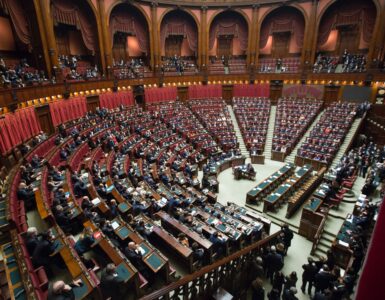We often hear the term “unemployment” in the news. Most of us have a general idea of what unemployment is but are not aware of the economics behind it.
Today, we will be discussing the concept of unemployment, together with the different types and causes of unemployment.
What is Unemployment?
Unemployment occurs when a number of factors of production (FOPs) are not used to produce goods and services. Labour forces that are willing and able to work but are without work are considered unemployed. The unemployed are actively searching for employment or are pending an appointment.
Different countries have different calculating criteria for determining the percentage of unemployed individuals in their labour force. The labour force includes both the employed and the unemployed that are economically active. On the other hand, economically inactive individuals are unemployed individuals who have neither sought employment in the past two weeks, nor started work in the next two weeks. They are either unwilling or unable to work.
Some of the formulae concerning unemployment includes:
Unemployment rate = [Number of unemployed individuals ÷ Labour force] × 100%
Labour force participation = [Labour force ÷ Working-age population] × 100%
However, when we say full employment, it does not mean that unemployment does not exist in the economy. There is a natural unemployment rate – non-cyclical unemployment that includes frictional, seasonal, and structural unemployment.
Factors
Three main factors affect the unemployment rate – the composition of the labour force, the size of the labour force, and the labour productivity of the employed.
The composition of the labour force involves the educational and skill qualifications attained by the workforce. Should workers possess skills that are no longer relevant to the economy, there may be a higher unemployment rate.
The size of the labour force is dependent on the number of individuals in the working-age population. If the size of the labour force increases but the number of employed individuals remain constant, there will be a higher unemployment rate. This occurs due to increased birth rates, decreased death rates, or increased net immigration.
Labour productivity is the output of work produced per person-hour. This is often based on the level of education and technology of the country. With higher productivity, firms are more attracted to increase employment. As such, the demand for labour increases and the unemployment rates will fall.
Types
Cyclical Unemployment
Cyclical, or demand-deficient unemployment, is caused by cycles of economic boom and decline. This means that it is determined by the aggregate demand – it is caused by a fall in aggregate demand (AD). It relates to the trends in the growth and production occurring within the business cycle, measured by the gross domestic product (GDP).
When AD falls, firms cannot sell their current output level. While they may have unsold goods in inventories, they have to inevitably cut back on production after some time. As such, there is less demand for labour, and consumer spending falls because of the multiplier effect. This causes a gap between the potential output and the actual output of the economy.
Frictional Unemployment
Frictional unemployment happens when workers resign or graduate, and are unemployed while seeking employment. This is caused by the time taken to find jobs – employers may choose to hire people that are better qualified, or candidates may choose to turn down the offer. If individuals choose to accept a job that they may not excel as much in, then there would be lower productivity. As such, the time taken to find a suitable job is necessary to ensure allocative efficiency.
There are two main causes – imperfect information and lack of incentives.
Imperfect Information
Frictional unemployment occurs when the unemployed are unaware of available employment opportunities, together with perfect information about different aspects of the jobs.
Lack of Incentives
Some of the unemployed may be unwilling to take up positions if they perceive the tax and benefit system as a loss in income as compared to remaining unemployed.
Institutional Unemployment
Institutional unemployment is a by-product of institutional factors and incentives that are permanent. Labour market institutions and phenomena, together with government policies such as high minimum wage floors, can result in institutional unemployment.
Seasonal Unemployment
Seasonal unemployment occurs due to the demand for various types of labour based on the different seasons of the year. This is seen especially in the agricultural sector when labour is employed primarily during harvest season but are unemployed for the remainder of the year. This can also occur based on the condition of the climate.
Structural Unemployment
Structural unemployment occurs due to occupational immobility and structural changes in the economy. This causes a mismatch of skills between unemployed and potential employers. As such, some workers may become unemployed for very long since they cannot find jobs that require their specialised skills.
There are a few reasons for this.
Change in Demand
As the free market works based on the demand and supply mechanism, a fall in the demand for a certain good will cause the price of the good to drop. This means that companies earn less and thus have to reduce the number of goods. As such, fewer workers are needed to produce the good, resulting in workers being retrenched.
Change in Production Methods
As technology progresses, new production methods are invented – fewer workers are needed for the same level of output. Some jobs with specific skills needed are rendered obsolete, resulting in workers being unemployed. Occupational immobility worsens this, as retrenched workers do not possess skills that are in demand. However, this can also create new employment opportunities, especially for workers with the skills needed to operate and maintain the technology.

Globalisation
In developed countries, labour-intensive jobs are no longer economically feasible, since developing countries can offer them for a lower cost. These workers are then retrenched as companies shift their jobs abroad. Countries may consider restructuring their economy to turn their attention to other industries to remain competitive in the global economy.
Persistent Cyclical Unemployment
When cyclical unemployment continues over a long time, there will be a low AD for long periods in the economy. Unemployed workers become out of practice or have their skills become irrelevant.
Regional Unemployment
Regional unemployment refers to structural unemployment in a certain part of a country caused by certain industries being located in certain regions. Its main cause is geographical immobility as workers are unwilling or unable to move between parts of the country.
Consequences
While it is normal in the economy, high unemployment rates can cause every aspect of the economy to suffer.
For consumers, unemployment will cause the unemployed to lose income. This causes a lower material standard of living since they have a lower purchasing power and will consume fewer goods and services. When the unemployed consume fewer goods and services, firms will earn less revenue and thus produce fewer goods and services. They may also receive fewer investments due to lower returns of investment.
On the other hand, the government will receive less tax revenue from the unemployed. Taxes include income tax due to the lack of work, together with goods and services tax (GST) as unemployed consumers spend less. Some governments also pay out benefits to unemployed individuals, which incurs a larger government expenditure. There is an opportunity cost incurred as the funds can be spent on other sectors of the economy.
For the overall economy, unemployment causes productive inefficiency. Many other factors will result in a decrease in the AD of the economy. The potential growth of the economy will also increase at a slower rate. Other social costs may be incurred, such as political instability, which will further result in the loss of tourism and profits.





Add comment